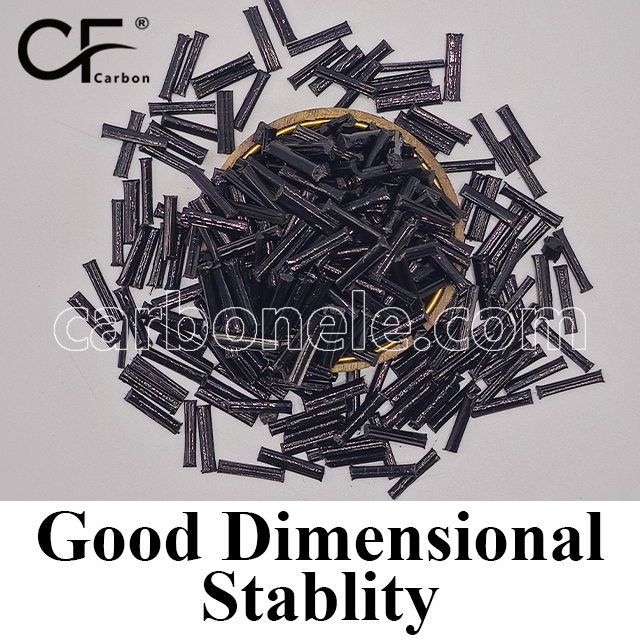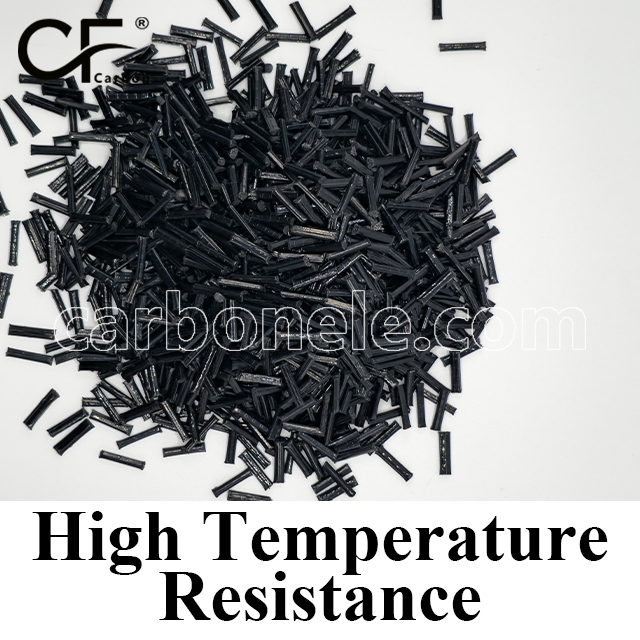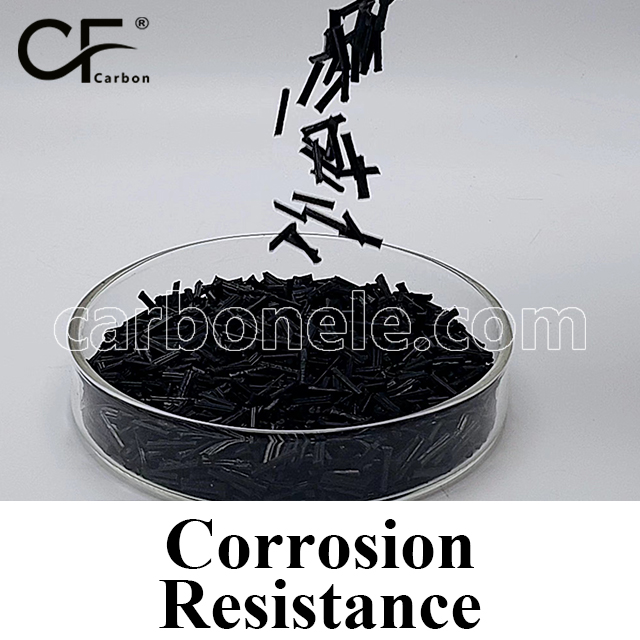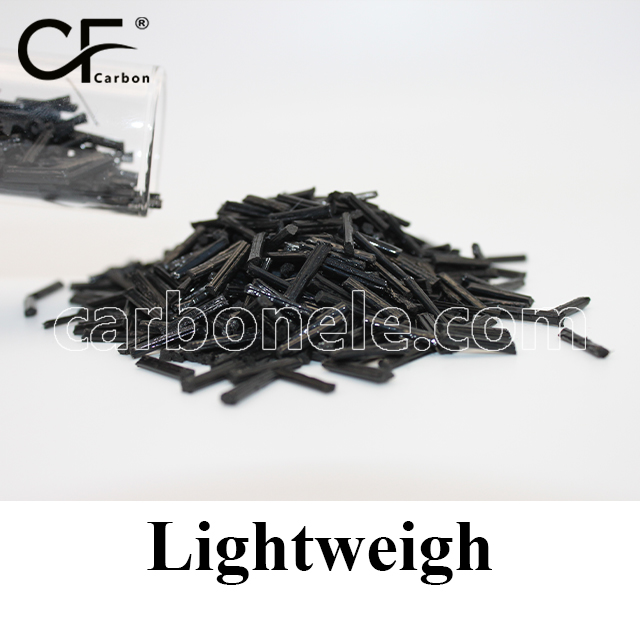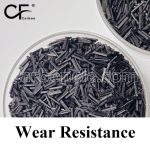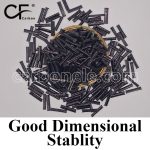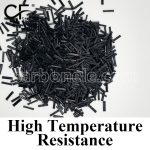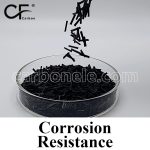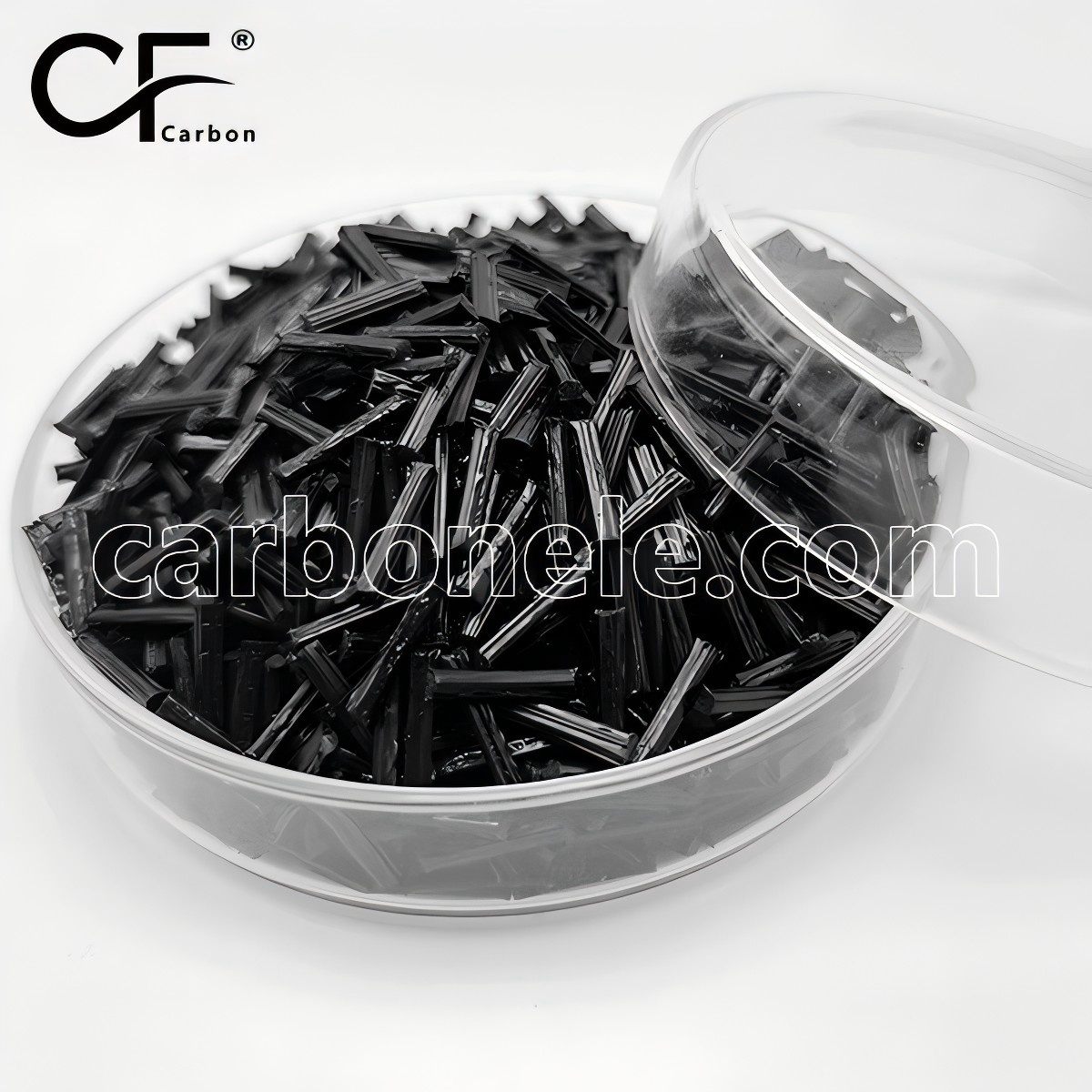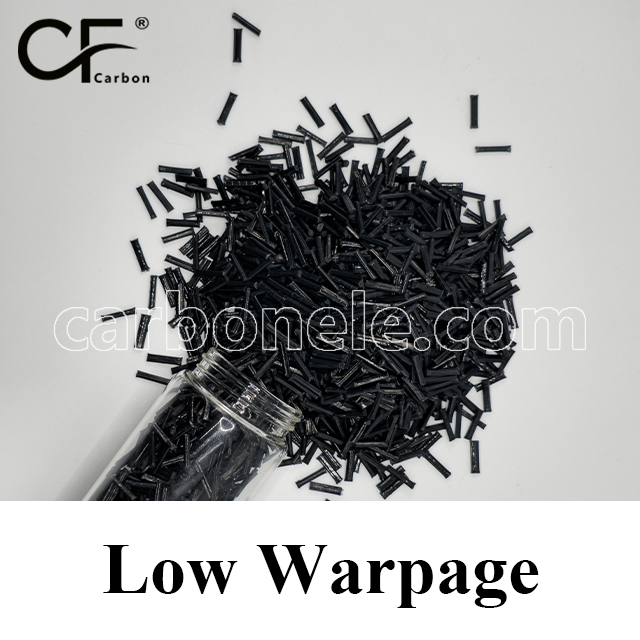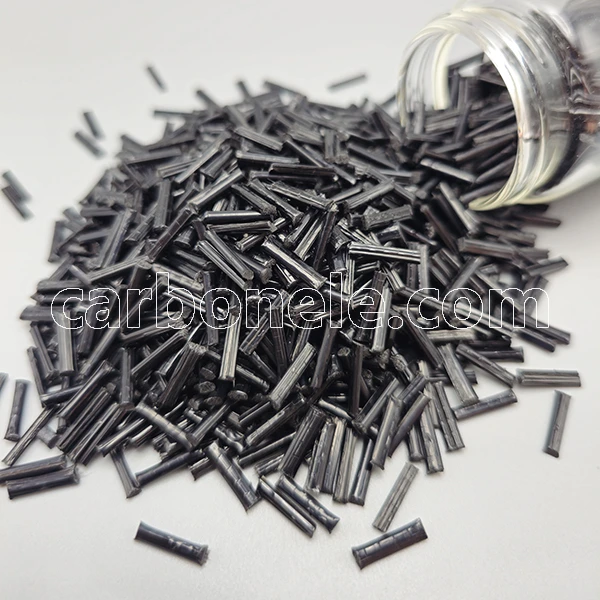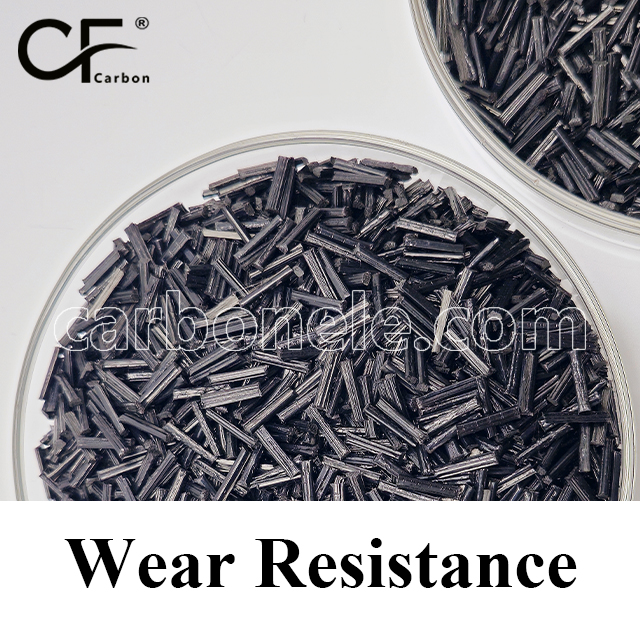PPA-LCF20 is a high-performance polyphthalamide reinforced with 20% long carbon fibers, offering enhanced strength (~125–140 MPa), stiffness (~9–10 GPa), and excellent impact resistance (~70–90 J/m). Ideal for structural parts requiring durability, thermal stability (HDT ~270 °C), and chemical resistance in dynamic environments.

PPA-LCF20 Improved Stiffness
- Model number: PPA-LCF-BCA2
- Matrix Resin: Personal Package Archive (PPA)
- Reinforcing Filler: Carbon fiber
- Appearance: Granules
- Grade: Injection/extrusion grade
- Packaging: 25kgs/bag
PPA-LCF20 | 20% Long Carbon Fiber Reinforced Polyphthalamide
PPA-LCF20 is a high performance, semi crystalline engineering thermoplastic reinforced with 20% long carbon fibers. This material is specifically designed to provide an advanced balance of mechanical strength, stiffness, and impact resistance, while also offering superior fatigue life and thermal dimensional stability. The incorporation of long carbon fibers, as opposed to traditional short fibers, enables more efficient load transfer across the polymer matrix, resulting in enhanced structural integrity and long-term performance under dynamic loading conditions.
Compared to short fiber reinforced alternatives like PPA-CF30, PPA-LCF20 delivers significantly improved tensile strength (~125–140 MPa) and flexural modulus (~9–10 GPa), while maintaining a higher elongation at break (~1.2–2.0%), contributing to better impact absorption and crack resistance. These characteristics make it highly suitable for parts exposed to vibration, mechanical shock, or repeated thermal cycling.
Core Performance Highlights
Mechanical Properties
Carbon Fiber Content: 20% (long carbon fibers for enhanced load transfer)
Tensile Strength: ~125–140 MPa — providing reliable structural performance
Flexural Modulus: ~9–10 GPa — offering strong stiffness while resisting deformation
Elongation at Break: ~1.2–2.0% — greater ductility than short fiber alternatives
Notched Izod Impact: ~70–90 J/m — excellent toughness and impact resistance
The long fiber reinforcement improves fatigue life, crack resistance, and mechanical resilience in demanding applications, especially where repeated load cycles or impact events occur.
Thermal Resistance
Heat Deflection Temperature (HDT): ~260–270 °C
Continuous Use Temperature: Up to 230 °C
With its high thermal stability, PPA-LCF20 maintains its mechanical properties at elevated temperatures, making it ideal for engine compartments, powertrain components, and thermal enclosures in high voltage environments.
Environmental & Chemical Durability
Moisture Absorption: ~0.06–0.10% — low moisture uptake for dimensional accuracy
Chemical Resistance: Excellent — highly resistant to automotive fluids, industrial oils, acids, bases, and cleaning agents
Performs reliably in aggressive environments such as under hood areas or chemical processing equipment, where exposure to moisture, heat, or corrosive substances is common.
Processing & Manufacturing
Molding Method: Injection molding (compatible with long fiber pellet feedstock or pultrusion processes)
Surface Finish: Matte with visible fiber texture — surface aesthetics may reflect fiber orientation
Tooling Requirements: Hardened, abrasion resistant mold steels recommended to withstand fiber induced wear
Processing Notes: Shear sensitive — to preserve fiber length and achieve optimal mechanical properties, careful control of melt flow and gating is essential during molding.
Despite slightly more demanding processing conditions than short fiber compounds, PPA-LCF20 rewards proper manufacturing setups with exceptional part performance and long service life.
Target Applications
Automotive & Mobility
Applications: Crossmembers, battery modules, engine mounts, brackets, and underbody shields
Offers an excellent lightweight alternative to metal in structural and semi structural automotive parts that face heat, vibration, and long term fatigue.
Electronics & Electrical
Applications: EMI/RFI shielding enclosures, motor housings, connector bodies
Maintains strength and dimensional integrity under elevated heat and mechanical stress — ideal for high density power electronics and EV platforms.
Industrial Equipment
Applications: Structural panels, robotic components, actuator housings, pump frames
Combines mechanical strength with resistance to harsh industrial fluids, making it suitable for heavy duty environments where both load bearing and chemical resistance are required.
Performance Summary Table
| Property | Value / Description |
|---|---|
| Carbon Fiber Content | 20% (Long Carbon Fiber Reinforced) |
| Tensile Strength | ~125–140 MPa |
| Flexural Modulus | ~9–10 GPa |
| Elongation at Break | ~1.2–2.0% |
| Notched Izod Impact | ~70–90 J/m |
| Heat Deflection Temp. | ~260–270 °C |
| Continuous Use Temp. | Up to 230 °C |
| Moisture Absorption | ~0.06–0.10% — low, ensuring dimensional consistency |
| Chemical Resistance | Excellent — resists oils, fuels, acids, bases, solvents |
| Wear Resistance | Moderate to high — superior to neat PPA |
| Processing Method | Injection molding — compatible with long fiber feedstock |
| Surface Finish | Matte — visible fiber pattern common |
| Dimensional Stability | High — maintains tolerances under thermal and mechanical stress |
If you want to get more information about PPA-LCF20, you can visit our Youtube.
Strength between PPA and PPA-CF
PPA-CF (carbon fiber reinforced) offers significantly higher mechanical strength and rigidity compared to standard PPA. The addition of carbon fiber enhances tensile strength, flexural strength, and wear resistance, making PPA-CF more suitable for heavy loads and extreme environments. While standard PPA is suitable for medium-load and conventional applications, PPA-CF provides superior performance for more demanding industrial conditions.
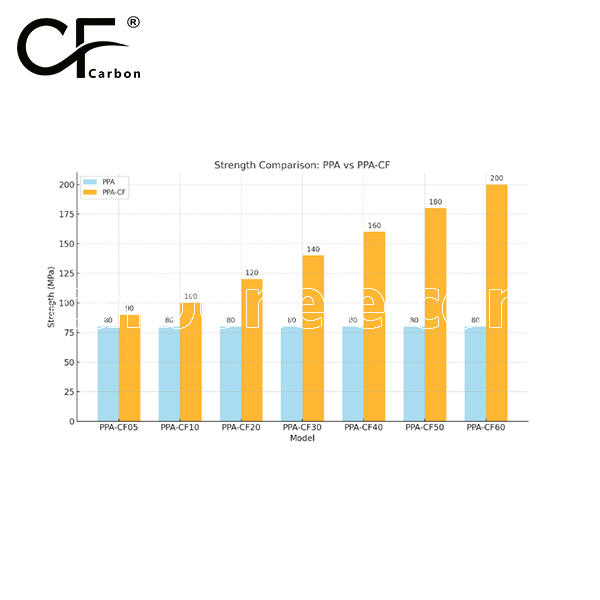
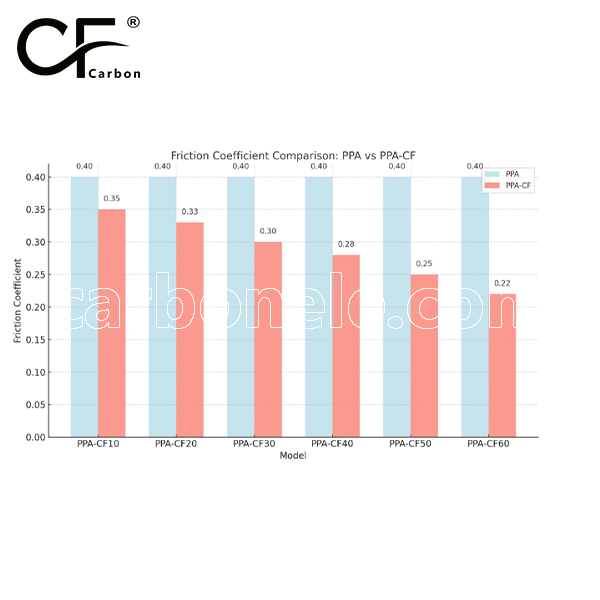

Frequently Asked Questions
Carbon (Xiamen) New Material Co., Ltd. aims to provide buyers with "one-stop" worry-free high-quality services. Here you can find all information about carbon fiber engineering plastics. If you still have questions, please send us an email for consultation!
-
How can I contact the manufacturer of a product that interests me?
When you find a product you are interested in, you can contact the manufacturer directly by sending an email and we will get back to you as soon as possible.
-
How do I find the products that interest me?
All you need to do is enter the keyword, product name in the search window and press the Enter key on your keyboard. Your search results page will then be displayed. You can also search within the product category pages on the home page. Each category is divided into subcategories, allowing you to refine your search and find products that interest you.
-
Where will I find a buying guide?
Please contact our after-sales service directly and we will provide you with a comprehensive operating guide.
-
What are CF Reinforced Thermoplastic Composites?
CF Reinforced Thermoplastic Composites are materials where carbon fibers are incorporated into a thermoplastic matrix. They combine the strength and stiffness of carbon fibers with the processability and recyclability of thermoplastics. For instance, they are used in automotive parts like bumper beams.
-
What are the benefits of CF Reinforced Thermoplastic Composites over traditional composites?
The key benefits include faster production cycles, easier recyclability, and better impact resistance. They also offer design flexibility. An example is in the manufacturing of consumer electronics casings where complex shapes can be achieved more easily.
-
How are CF Reinforced Thermoplastic Composites processed?
Common processing methods include injection molding, extrusion, and compression molding. Injection molding is widely used for mass production. For example, in the production of small components for the medical industry.
-
What industries use CF Reinforced Thermoplastic Composites?
They are utilized in aerospace, automotive, medical, and sports equipment industries. In aerospace, they can be found in interior components. In the medical field, they might be used in prosthetics.
-
How does the carbon fiber content affect the properties of the composites?
Higher carbon fiber content generally leads to increased strength and stiffness but may reduce ductility. A moderate content is often balanced for specific applications. For example, a higher content might be preferred in structural parts of a race car.
-
What are the challenges in using CF Reinforced Thermoplastic Composites?
Challenges include higher material costs, complex processing equipment requirements, and ensuring uniform fiber dispersion. Issues with adhesion between the fibers and the matrix can also arise. An example is in achieving consistent quality in large-scale production.








